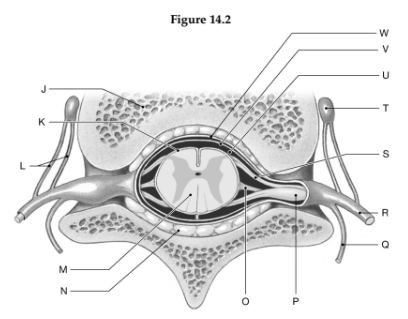One of your friend's femurs is abnormally short and curved. When asked about it, they tell you that when they were very young, they fell from a tree and fractured the femur at the distal end. Their pediatrician urged the parents to allow your friend to receive surgery for the fracture, but they refused. What most likely happened to result in the abnormal femur?
A. Because he was young, the femur healed so rapidly that it grew incorrectly and no medical intervention prevented this from occurring.
B. The hematoma stage of the fracture never filled in with fibrocartilage, which caused the bone to never heal properly.
C. Because the epiphyseal plate was not repaired, any subsequent growth in the bone was stunted and abnormal.
D. Lack of physical therapy caused the muscles of the leg to not heal correctly, inhibiting bone growth.
Answer: C
You might also like to view...
How many osmoles are in a solution of 1M NaOH?
?A. 1 osm ?B. 2 osm ?C. 3 osm ?D. 4 osm
Using the figure above, identify the labeled part.

1. Label J: ______________________________
2. Label K: ______________________________
3. Label L: ______________________________
4. Label M: ______________________________
5. Label N: ______________________________
6. Label O: ______________________________
7. Label P: ______________________________
8. Label Q: ______________________________
9. Label R: ______________________________
10. Label S: ______________________________
11. Label T: ______________________________
12. Label U: ______________________________
13. Label V: ______________________________
14. Label W: ______________________________
Photoreceptors called ____________________ are responsible for night vision
Fill in the blank(s) with correct word
Tetrapoda (node 6 in Figure 1-4) is a crown group, whereas Tetrapodomorpha is the corresponding stem group. What organisms are included in Tetrapoda? In Tetrapodomorpha?
What will be an ideal response?